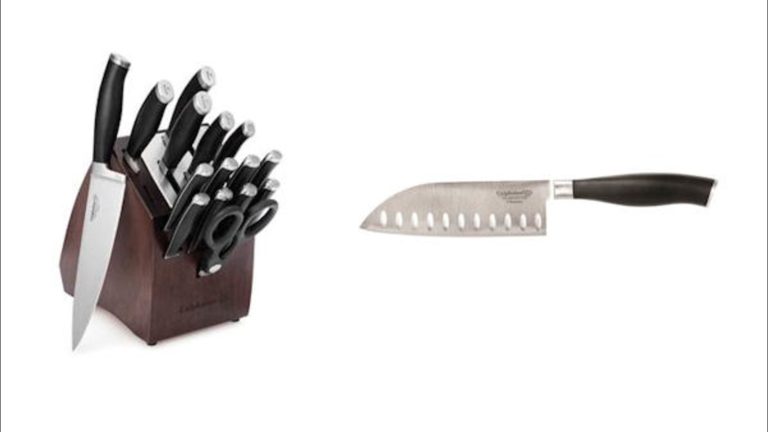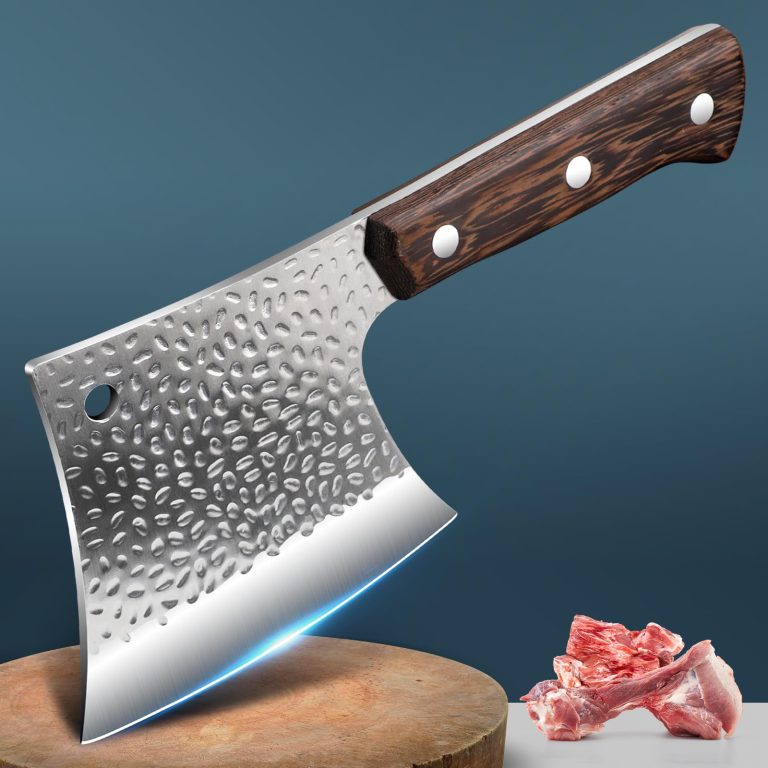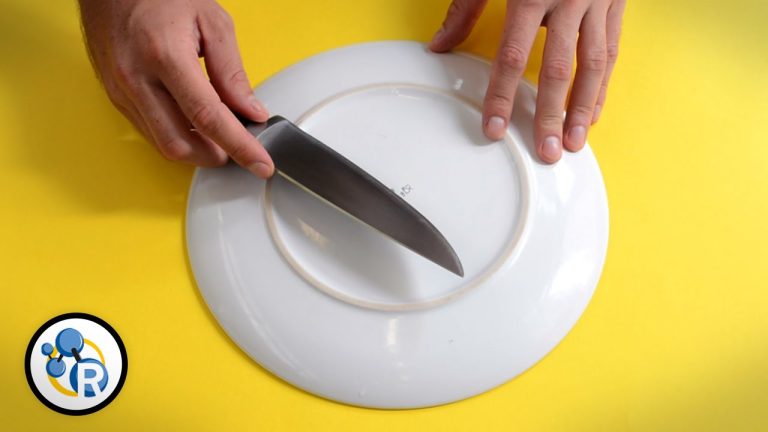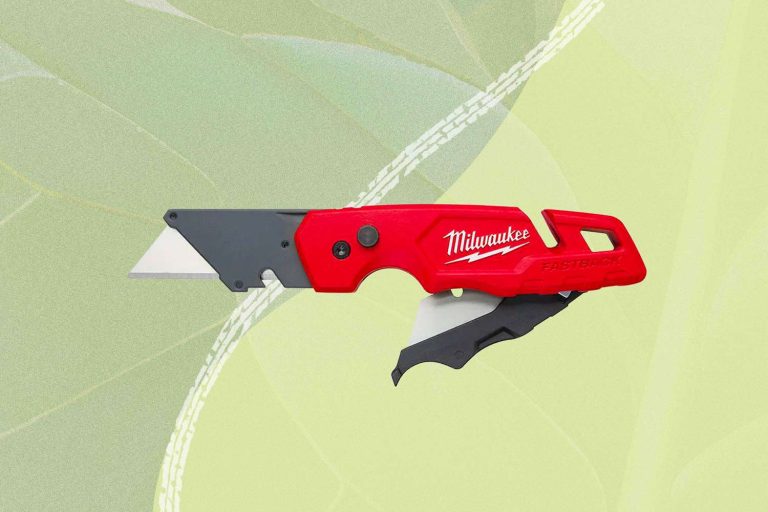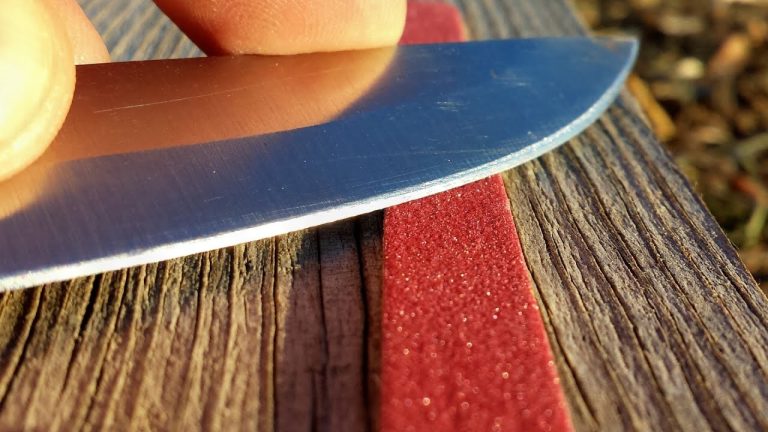Bread Knife Uses: Unleashing the Cutting Power
A bread knife is primarily used for slicing bread evenly and effortlessly. It is a versatile tool that can also be used for cutting through cakes, pastries, and other delicate foods without squishing or tearing them apart.
A bread knife is an essential tool in any kitchen as it allows for precise and clean cuts, ensuring that you get uniform slices of bread every time. Whether you are preparing sandwiches, toast, or a bread recipe, a bread knife is indispensable for achieving the perfect slice.
Additionally, its serrated blade helps to grip the bread’s crust, making it easier to cut through without crushing the loaf. This makes a bread knife an excellent option for cutting through crusty artisan bread or even delicate pastries like croissants without causing any damage to their structure. With its long, thin blade and sharp serrations, a bread knife is a must-have tool for any avid baker or kitchen enthusiast. Its versatility and effectiveness in cutting through various types of bread make it an indispensable tool in the culinary world.
1. Must-Have Bread Knife Design Features
| Serrated blade for effortless slicing |
| Bread knives with a serrated blade are essential for effortlessly slicing through crusty bread without crushing or tearing it. The sharp teeth of the serrated blade effectively grip the bread, allowing for a smooth slicing motion. |
| Length and thickness for optimal control |
| The length and thickness of a bread knife are important design features that greatly influence the control and precision while cutting bread. A longer blade provides better coverage, while a thinner blade is ideal for precise cuts. |
| Ergonomic handle for comfortable grip |
| An ergonomic handle is crucial for a comfortable grip during prolonged use. Look for a bread knife with a handle that fits comfortably in your hand, offering stability and reducing fatigue. |
| Full tang construction for durability |
| A bread knife with a full tang construction ensures maximum durability and balance. The blade extends through the handle, providing strength and stability for years of reliable usage. |
2. Cutting Through Crusty Artisan Breads
A bread knife is essential for cutting through crusty artisan breads. With its long, serrated blade, it is designed to slice through tough exteriors without squishing the delicate insides.
To achieve clean slices, it is important to use the proper technique. Start by gently sawing back and forth, using the full length of the blade. Apply minimal pressure to avoid crushing the loaf. It is also recommended to use a bread board or cutting board with a groove to catch crumbs.
Safety is key when handling a sharp bread knife. Always keep your fingers away from the blade, using a claw grip to secure the bread. Make sure to cut away from your body to avoid accidents.
When it comes to choosing the right bread knife for artisan loaves, look for one with a sharp, serrated blade and a comfortable handle. This will ensure precise cuts and a pleasant cutting experience.
3. Perfectly Slicing Soft And Delicate Breads
A bread knife is a versatile tool that can be used for a variety of purposes. One of its key uses is for perfectly slicing soft and delicate breads. Using a bread knife for soft breads offers several benefits:
- Avoiding squashed or compressed slices: The serrated blade of a bread knife allows for clean and precise cuts, preventing the bread from being squashed or compressed.
- Different techniques for various soft bread textures: Whether you’re dealing with a fluffy brioche or a tender baguette, a bread knife offers the flexibility to adapt your slicing technique to suit the specific texture of the bread.
- Suggestions for choosing a bread knife for soft breads: When selecting a bread knife for soft breads, opt for one with a longer blade and a sharp edge. This will enable you to maintain control and achieve thin, even slices.
Investing in a quality bread knife designed for soft breads can elevate your slicing game and ensure that you serve picture-perfect slices every time.
4. Versatility Beyond Bread: Other Uses For Bread Knives
Bread knives are known for their exceptional ability to slice through various types of bread, but their versatility extends far beyond that. One of the main reasons why bread knives are a must-have kitchen tool is their effortless ability to slice cakes and pastries with precision. The serrated edge allows for clean cuts without squishing or damaging delicate treats.
In addition to sweet treats, bread knives are also adept at tackling tough-skinned fruits and vegetables. The sharp teeth of the knife easily pierce through the skin of fruits like pineapple or watermelon, making it easier to slice and enjoy.
Bread knives are also ideal for cutting sandwiches and bagels with ease. The serrated edge ensures a clean cut without flattening or crushing the fillings, allowing you to enjoy a perfectly portioned sandwich.
Moreover, bread knives are a versatile tool for various everyday kitchen tasks. Whether it’s slicing tomatoes, leveling a cake, or dividing a bunch of grapes, a bread knife can handle it all. Its sharp serrated edge makes it an essential piece in any home cook’s arsenal.
5. Caring For Your Bread Knife
A bread knife is a versatile tool that can be used for more than just slicing bread. Proper care and maintenance of your bread knife is essential to ensure its longevity and optimal performance.
Proper cleaning and maintenance techniques:
- Regularly clean your bread knife using warm soapy water and a non-abrasive sponge. Avoid using harsh chemicals or abrasive cleaners as they can damage the blade.
- After cleaning, thoroughly dry the knife to prevent any moisture or rust from forming.
- Storing your bread knife correctly is also crucial. Keep it in a knife block or on a magnetic strip to protect the blade from dulling or chipping.
Sharpening and honing to retain optimal performance:
- Regularly sharpen your bread knife to maintain its sharpness. You can use a sharpening stone or a professional knife sharpener for best results.
- Honing the knife with a honing rod is also recommended, as it helps in realigning the blade’s edge and keeps it sharp for longer.
Recommended accessories for bread knife care:
- A knife sheath or blade guard can provide additional protection when storing and transporting your bread knife.
- A cutting board specifically designed for bread can help preserve the knife’s edge by reducing friction and preventing excessive wear.
By following these proper cleaning, maintenance, and storage techniques, your bread knife will remain sharp, durable, and ready to tackle any slicing task you throw at it.
6. A Bread Knife For Every Budget
When it comes to finding a bread knife that suits your budget, it’s important not to compromise on quality. There are options available for every budget range, ensuring you can find a bread knife that meets your needs without breaking the bank.
If you’re looking for a mid-range bread knife, consider ones with added features that enhance their performance. These knives often come with serrated blades and ergonomic handles, making it easier to slice through crusty bread without applying excessive pressure. They offer a balance between affordability and functionality.
On the other hand, if you’re a professional or serious home cook, investing in a high-end bread knife can be worth it. These knives are often made from high-quality materials such as stainless steel, providing precision and durability. Many high-end bread knives also have a longer blade, allowing for smoother and more even slices.
When making a purchasing decision, take the time to research and read reviews. Consider factors such as the blade material, handle design, and overall quality. By doing so, you can ensure that your bread knife investment is both affordable and meets your expectations.
7. Expert Tips From Professional Bakers
Expert Tips from Professional Bakers:
Insights from renowned bakers on bread knife selection:
- Choose a serrated knife with a long, thin blade for the best results.
- Look for a knife with a comfortable handle, ensuring a secure grip.
- Consider the size of the bread you usually work with, as this will determine the length of the blade you need.
- Avoid using a straight-edged knife, as it will crush the bread instead of slicing it.
Tricks for achieving bakery-worthy bread slices:
- Start with a well-rested loaf to allow for easier slicing.
- Use a gentle sawing motion and let the serrated blade do the work.
- Don’t press too hard, as this can lead to squashed or uneven slices.
- Keep the knife clean and sharp for the cleanest cuts.
How to extend the lifespan of your bread knife:
- Wash and dry the knife by hand to avoid damage from the dishwasher.
- Store the knife in a protective sheath or knife block to prevent accidents and maintain the sharpness of the blade.
- Avoid using the knife on hard or frozen foods, as this can dull the blade prematurely.
Must-know advice for avid home bakers:
- Invest in a high-quality bread knife to make your baking experience more enjoyable and efficient.
- Regularly inspect the blade for signs of wear and tear, and replace it if necessary.
- Practice proper knife handling and safety techniques to prevent accidents in the kitchen.
8. Storing And Displaying Bread Knives
Storing and Displaying Bread Knives
|
When it comes to storing and displaying bread knives, there are several space-saving solutions to consider. One option is to use a knife block or knife tray specifically designed to hold bread knives. This keeps them organized and easily accessible while taking up minimal counter space.
Another creative option is to incorporate bread knives into your kitchen decor. You can display them in a knife magnet strip mounted on a wall or on a knife rack mounted underneath a cabinet. This not only adds a visually appealing element to your kitchen but also keeps your bread knives within reach.
Practical considerations when storing and displaying bread knives include ensuring they are properly cleaned and dried before storage to prevent rusting. Additionally, consider the frequency of use and accessibility when choosing a storage solution for your bread knives.
9. Bread Knife Maintenance: Troubleshooting Common Issues
Bread Knife Uses
A bread knife is an essential tool in the kitchen and proper maintenance is crucial to ensure its peak performance and longevity. Here are some common issues that may arise with your bread knife and how to troubleshoot them:
Dealing with blade dullness and reduced performance
If you notice that your bread knife is not slicing through bread as easily as before, it may be due to dullness. To address this issue, regularly sharpen the blade using a sharpening stone or honing rod. Additionally, ensure that you are using the correct cutting technique, applying gentle pressure to prevent excessive strain on the blade.
Addressing handle damage or wear and tear
Over time, the handle of your bread knife may experience wear and tear, resulting in a loose or uncomfortable grip. To address this, inspect the handle for any cracks or damage. If necessary, consider replacing the handle or using grip-enhancing tools such as knife grips or handle wraps to improve comfort and control during use.
Tackling rust and corrosion on the knife
Rust and corrosion can occur on the blade of a bread knife, particularly if not properly dried after use or exposed to moisture. To tackle this problem, clean the knife thoroughly and dry it immediately after each use. If rust has already formed, gently scrub the affected areas with a mixture of baking soda and water, rinse, and dry thoroughly to prevent future corrosion.
Troubleshooting common bread knife problems
In addition to the above issues, other common bread knife problems may include misalignment of the blade, loose rivets, or bent tips. For these problems, consult a professional knife sharpener or contact the manufacturer for guidance. Proper maintenance and timely troubleshooting will help keep your bread knife in optimal condition for years to come.

Credit: www.hedleyandbennett.com
10. Bread Knife Safety: Avoiding Accidents In The Kitchen
Proper handling and safe storage practices are essential to prevent accidents and injuries when using a bread knife in the kitchen. Always hold the knife with a firm grip and keep your fingers away from the blade while slicing. Store the knife in a secure place, out of reach of children and where it cannot accidentally fall and cause harm.
Choosing the right cutting surface is also important for bread slicing. Use a cutting board made of wood or plastic, as these materials are easier on the knife blade and reduce the risk of accidents. Avoid using hard surfaces like glass or marble, as they can cause the knife to slip and potentially injure you.
In addition to practicing safety measures yourself, it’s crucial to teach knife safety to children and beginners. Show them how to safely handle and use a bread knife, emphasizing the importance of proper grip, controlled movements, and keeping their attention focused on the task at hand.
Conclusion
To sum up, the bread knife is an essential tool in every kitchen. Its sharp, serrated blade allows for clean, effortless slicing of bread, making it a versatile utensil. Beyond its obvious use for cutting bread, this knife can also be utilized for various other tasks in the kitchen.
For instance, its serrated edge makes it highly efficient for slicing through delicate fruits and vegetables with tough skin, like tomatoes or pineapples. Additionally, the bread knife can be employed for smoothly dividing cakes into layers or evenly portioning meat cuts.
Its versatility and precision make it a must-have tool for any cook or baker. When selecting a bread knife, opt for a high-quality blade that is both sharp and durable. By having a bread knife in your kitchen arsenal, you’ll be equipped to handle a wide range of slicing tasks with ease and efficiency.

